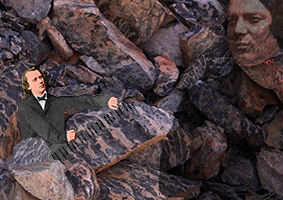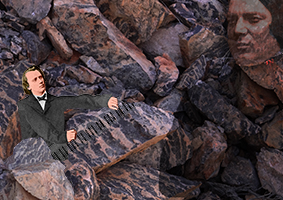
When a concert is perfectly presented in almost every way, what is the critic to do? Time to expatiate on the program! The San Francisco Symphony, under the exciting yet judicious baton of visiting conductor Lionel Bringuier, created yet another world-class occasion for music Wednesday evening. The second half of the program was the essence of refinement, ranging from the meticulous jewel of Henri Dutilleux’s Métaboles to Ravel’s sweeping sendup of La Valse. But nothing, even Hélène Grimaud’s keyboard artistry and endurance, could unburden the giant hunk of angst and solemnity that began the evening: Brahms’ Piano Concerto No 1 in D Minor.
I do not want to offend readers who love this piece. I was among their crowd in earlier decades of my life. The work is among the composer’s most popular. It’s a challenge for pianists. It has more melodies than the number of times Lindsay Lohan has been in rehab. The scarily powerful first movement strikingly fits its standard characterization as a reflection of circumstances surrounding Robert Schumann’s insanity. The second is easily a sacred homage to Schumann’s wife Clara; the third a field of wild horses. In short, it's highly romantic.
Bringuier excelled in his careful coordination with Grimaud’s expressivity, and especially, his making sure that accents got plenty of punch to poke through the forest of notes. Bravo to the both of them!
But the thing is a slog: Listed as 41 minutes in the program, Bringuier and Grimaud took 51 minutes to land the leviathan. Thanks to Bringuier’s fine sense of pacing and architecture, it didn’t sound any longer than usual, but that’s not saying much. To my ears, the music has too many melodies to fit into a decent form, too heavy a reliance on stock devices such as broken octaves and trills, too many in-between notes, too lackluster an orchestration. In many ways, Brahms was learning his craft with this piece and exorcizing demons. The results were that his subsequent works, like the masterful first Serenade, did not repeat many of these infelicities.

Grimaud impressed me not only with her technique, but also with her supreme musicality and staying power. She knew how to make Brahms’ repetitive phrases more alive by subtle variations in accent and rhythm. Most of all, she saved her strength for the thundering left-hand low octaves at the climax of the finale: They must be heard through the thick din of the multitude of other notes in the piano and orchestra. Bringuier excelled in his careful coordination with Grimaud’s expressivity, and especially, his making sure that accents got plenty of punch to poke through the forest of notes. Bravo to the both of them!
After intermission, with only a few less audience members not wanting to hear 20-century music, the Symphony showcased the two French masterpieces. In Métaboles Dutilleux puts a microscope on form and verticality in music. The five movements are exquisitely structured to balance contrasts in mood (e.g., “torpid” vs. “flamboyant”). But the movements remain unified in style: Like the “incantation” that begins the 16-minute work, one amazing chord after another follows, but their progression isn’t as important as their individual sounds. In the music, I sense the care of a watchmaker, not the turmoil of a man who has had to deal with the insanity of his mentor. A welcome relief. Need I add that Nice-native Bringuier and the Symphony played Dutilleux as if to the jewelry-store born?
To get back on the swoon wagon, the orchestra ended with the ever-popular La Valse. Having played it here less than a year ago, the players knew what they were doing, and at the conclusion accomplished the still-breathtaking whooshes from orchestra bass to treble like trapeze artists. If only Brahms could have heard it.

